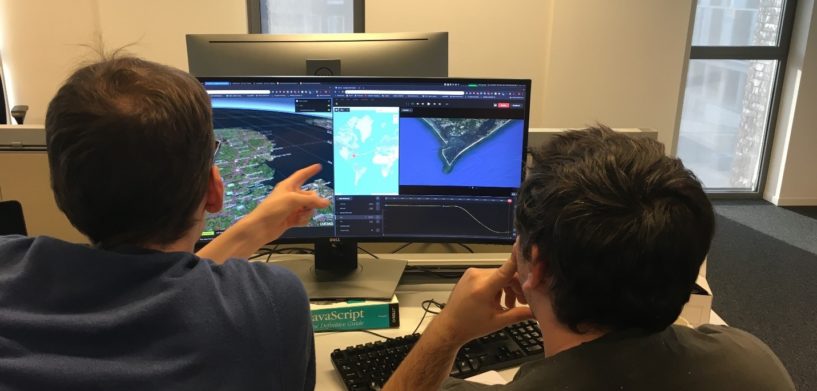Employees in Hexagon’s Leuven office in Belgium put their creativity and development skills to the test at our internal Hackathon on February 21-22. During the event, each team had just 24 hours to develop the project of their dreams.
Let’s take a look at the team that impressed the audience the most: Team “Animationing.”
The team members, Glenn Croes and Kobe Vanbinnenbeek, chose their project because of their desire to make captivating animations for use in product demos. The catch? They wanted to accomplish this task without any necessary programming.
First, the teammates imported camera paths from the beta Google Earth Studio solution, which is an animation tool for Google Earth imagery. From there, they exported a script (JSX file) that contained positions and rotations for each animation frame.
Finally, they imported the file in Hexagon’s LuciadRIA server solution, where times, positions, and rotations were extracted from the file. In LuciadRIA, they used this information to create awesome animations on the native 3D data without needing any programming knowledge. Additionally, they did not have to write a single line of code.
Team “Animationing” in Action
In the video below, see how the Basilique Notre-Dame de la Garde in Marseille, France, is defined as the orbit point in Google Earth Studio. Parameters like radius and altitude can be configured by using the sliders.
Next, the camera path is exported as a JSX file. It contains times, positions, and rotations that can be imported into LuciadRIA and applied onto our own data. In the final part of the video, you can see the Basilique Notre-Dame de la Garde starring in the resulting movie.
Glenn and Kobe really animated their colleagues with this project; it’s no surprise they took home a gold medal. Congratulations, Team “Animationing!”
Interested in learning more about data visualization in Luciad Portfolio solutions? See another example of visualizing 3D data.
If you missed them, you can also read the previous features on Team “ACEd it” and Team TLCD Soundsystem on the Sensing Change Blog.















